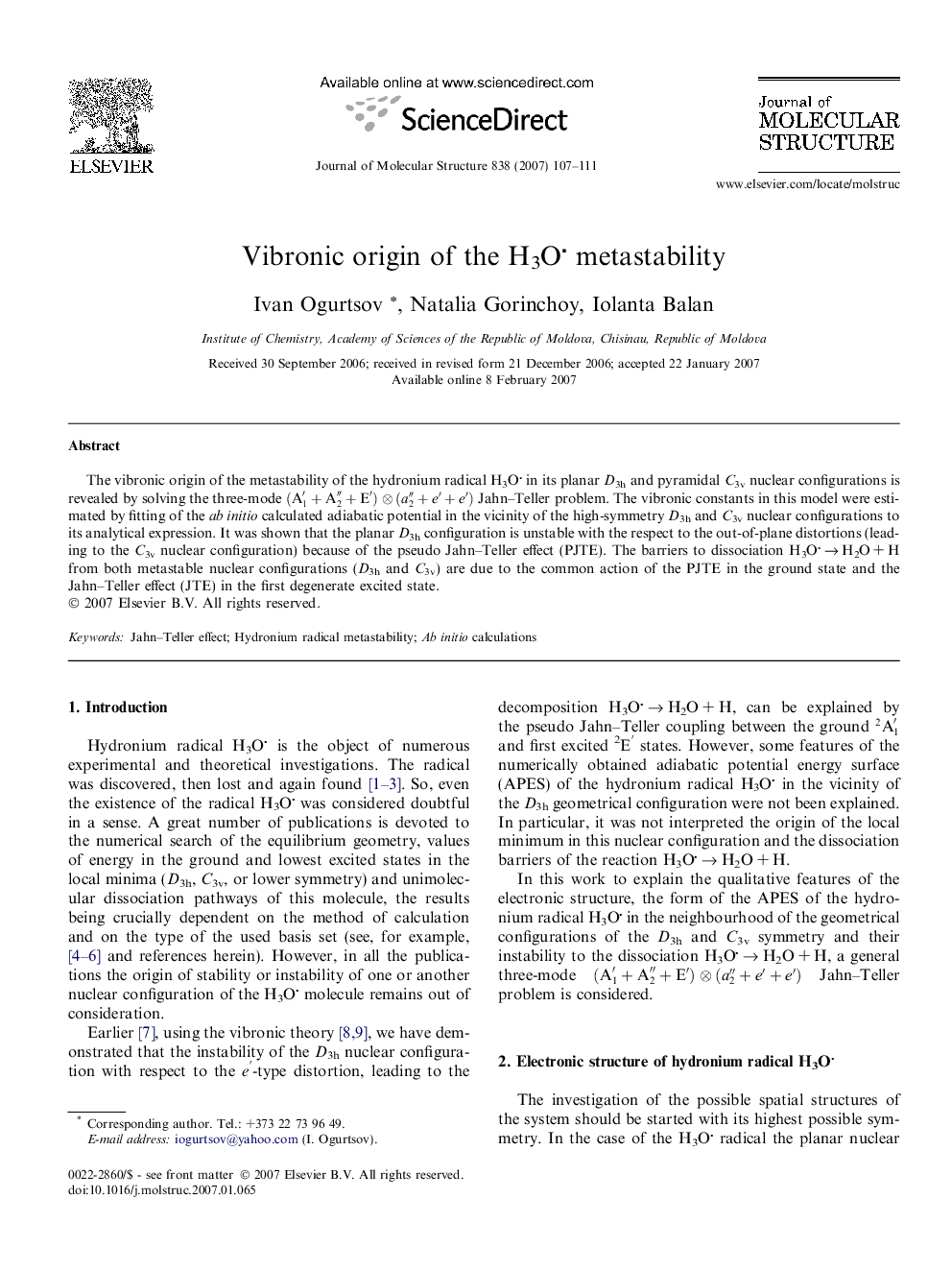| Article ID | Journal | Published Year | Pages | File Type |
|---|---|---|---|---|
| 1411852 | Journal of Molecular Structure | 2007 | 5 Pages |
Abstract
The vibronic origin of the metastability of the hydronium radical H3O in its planar D3h and pyramidal C3v nuclear configurations is revealed by solving the three-mode (A1â²+A2â³+Eâ²)â(a2â³+eâ²+eâ²) Jahn-Teller problem. The vibronic constants in this model were estimated by fitting of the ab initio calculated adiabatic potential in the vicinity of the high-symmetry D3h and C3v nuclear configurations to its analytical expression. It was shown that the planar D3h configuration is unstable with the respect to the out-of-plane distortions (leading to the C3v nuclear configuration) because of the pseudo Jahn-Teller effect (PJTE). The barriers to dissociation H3O â H2O + H from both metastable nuclear configurations (D3h and C3v) are due to the common action of the PJTE in the ground state and the Jahn-Teller effect (JTE) in the first degenerate excited state.
Related Topics
Physical Sciences and Engineering
Chemistry
Organic Chemistry
Authors
Ivan Ogurtsov, Natalia Gorinchoy, Iolanta Balan,
